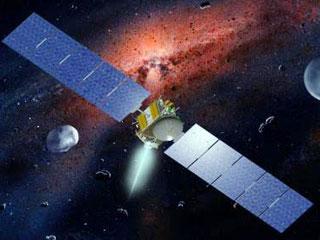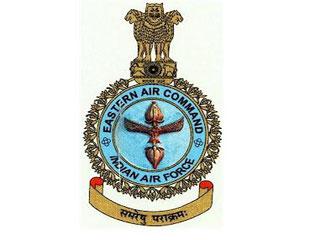
The Dawn spacecraft. A NASA illustration
WASHINGTON (BNS): After unraveling the mystery of the Solar System’s most ancient asteroid, NASA’s Dawn spacecraft is now getting ready to begin its first science orbit of the celestial object.
Dawn rendezvoused with Vesta – the second most massive asteroid in Solar System and the brightest object in the asteroid belt as seen from Earth – on July 15.
The first images of the grand old asteroid taken by the spacecraft on July 24 were unveiled by NASA on Monday. The images were taken when the robotic probe was at a distance of 5,200 kilometers from the asteroid.
"Images from Dawn's framing camera, taken for navigation purposes and as preparation for scientific observations, are revealing the first surface details of the giant asteroid. These images go all the way around Vesta, since the giant asteroid turns on its axis once every five hours and 20 minutes," the space agency said.
Vesta is the second most massive asteroid in our Solar System and is thought to have survived from the early phase of planet formation approximately 4.5 billion years ago. Almost all other asteroids of comparable size either accumulated to form planets or broke apart due to violent collisions.
“We have been calling Vesta the smallest terrestrial planet,” said Chris Russell, Dawn’s principal investigator at UCLA.
“The latest imagery provides much justification for our expectations. They show that a variety of processes were once at work on the surface of Vesta and provide extensive evidence for Vesta’s planetary aspirations,” the scientist said.
Currently positioned at a distance of 2,900 kilometers from the giant asteroid, Dawn will begin its first of four “intensive science orbits” of Vesta on August 11 at an altitude of nearly 2,700 kilometers.
The maneuver will provide in-depth analysis of the rocky asteroid that circles the Sun between the orbits of Mars and Jupiter, NASA said.
Dawn, which is now at a distance of 184 million kilometers from Earth, began its journey in September 2007 and travelled 2.8 billion kilometers to reach its destination.
The robotic orbiter is equipped with framing cameras, visible and infrared mapping spectrometer and gamma ray and neutron detector.
While the two framing cameras will capture detailed images of Vesta’s surface, search for moons in the asteroid’s vicinity and look for evidences of old volcanic activity, the visible and infrared mapping spectrometer will investigate its surface mineralogy. The gamma ray and neutron detector will detect elemental composition of the asteroid.
After completing its orbital missions, Dawn will depart Vesta in July 2012 to embark on its second phase of voyage to explore dwarf planet Ceres where it will arrive in 2015.
 Previous Article
Previous Article Next Article
Next Article












The Indian Air Force, in its flight trials evaluation report submitted before the Defence Ministry l..
view articleAn insight into the Medium Multi-Role Combat Aircraft competition...
view articleSky enthusiasts can now spot the International Space Station (ISS) commanded by Indian-American astr..
view article